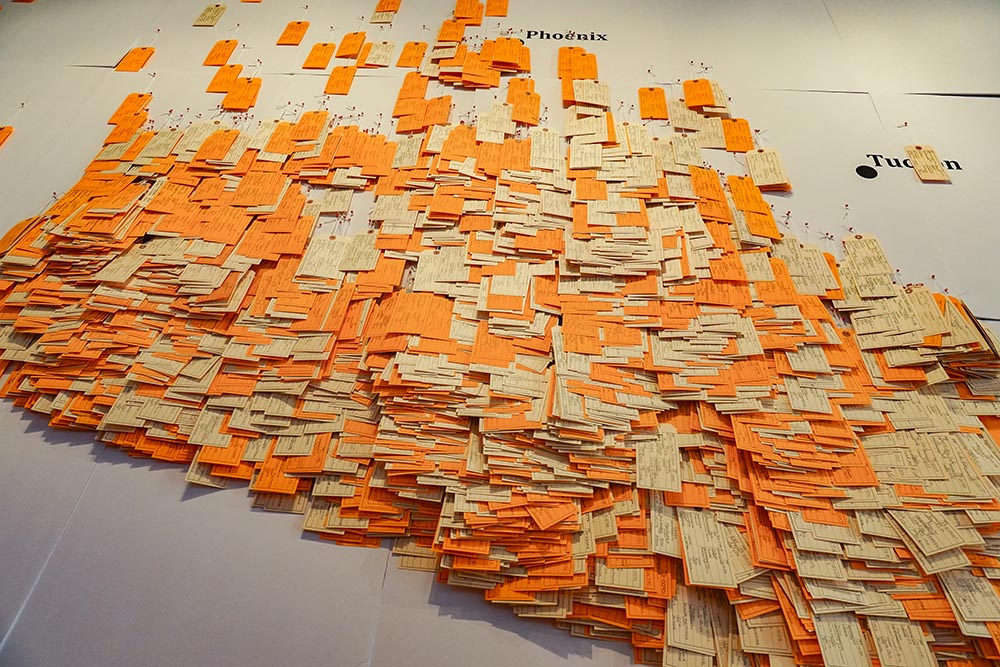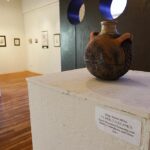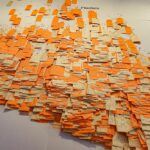Currently on display at the University of Texas Rio Grande Valley’s Edinburg and Brownsville campuses, “Hostile Terrain 94” focuses on the thousands of people who have died while crossing the U.S.-Mexico border in the Sonoran Desert of Arizona from the mid-1990s to 2019 as part of the U.S. government’s 1994 border enforcement policy of ‘prevention through deterrence’.
Sponsored by the UTRGV College of Liberal Arts and organized by the Undocumented Migration Project, the exhibition uses more than 3,200 toe tags handwritten by volunteers for each installation that are placed on the exact location an individual’s body was found on a map.
The exhibit is the brainchild of Jason de Leon, the head curator of “Hostile Terrain 94”, executive director of the Undocumented Migration Project and a professor of Anthropology and Chicano and Central American Studies at the University of California Los Angeles. De Leon created the exhibit as part of a network of 150 pop-up national and global exhibitions to bring to life the human cost of immigration policy and the people who lived and died trying to reach the United States.
Led by Dr. Sarah Rowe, anthropology associate professor at UTRGV and the exhibit coordinator, students and community volunteers have been working to put the exhibition together at UTRGV since the Fall semester 2019, with a brief postponement due to the COVID-19 pandemic.
For Rowe, the goal of the exhibition is to turn numbers back into people while encouraging viewers to think about what they as citizens are complicit in with this issue along with encouraging elected officials to find a more humane solution to our current immigration crisis.
Rowe explains that each tag in the installation is only representative of those whose bodies have been found and their ultimate fate. Many who perish are never found.
“The tag just shows you that end moment. There’s a person and that is how they died, but the whole context of their story: What brought them to that moment; why they felt they needed to migrate; what brought them to the United States—that is still absent. So even though the wall helps travel the depth of this slow-moving catastrophe, every time I fill out a tag I walk away feeling that there is still something missing,” she said.
“Hostile Terrain 94” also features a juried student art exhibition at the Brownsville installation and a ZOOM lecture series focusing on the migrant experience along the South Texas border From Eddie Canales of the South Texas Human Rights Center on Nov. 9 and Lilian Cabrera of the Sidewalk School on Nov. 17.
The exhibit is on display at the Rusteberg Gallery on the UTRGV Brownsville Campus through Nov.11, and at the University Library on the Edinburg Campus through Nov. 19.
For more information visit www.utrgv.edu/hostile-terrain-94/








